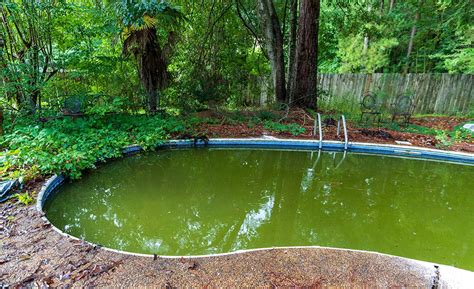A Sparkling Pool Awaits: Black Algae Removal Made Easy
A beautiful, sparkling pool is the centerpiece of any summer gathering, a tranquil oasis for relaxation, and a source of pride for homeowners. But that pristine image can quickly be shattered by the unwelcome arrival of black algae. This stubborn, resilient algae isn't just unsightly; it can also pose health risks. Fortunately, removing black algae doesn't have to be a daunting task. This comprehensive guide will walk you through effective methods for black algae removal, leaving your pool sparkling and safe once more.
What is Black Algae, and Why is it So Difficult to Remove?
Black algae ( Cyanobacteria) is a particularly tenacious type of algae that thrives in warm, sunny conditions. Unlike other algae that appear green, black algae forms dark, almost black, slimy patches on pool surfaces. Its resilience stems from its ability to penetrate porous surfaces like plaster and grout, making complete removal challenging. Furthermore, black algae produces a protective layer that makes it resistant to many common pool chemicals.
Identifying Black Algae: Is it Really Black Algae?
Before you begin treatment, it's crucial to correctly identify the problem. Black algae typically appears as:
- Dark, almost black, staining: It's not just discoloration; it's a slimy, textured growth.
- Patches on the pool floor and walls: It often starts in shaded areas or crevices.
- Resistance to brushing: Unlike other algae, black algae won't easily brush away.
If you suspect black algae, carefully examine the affected areas. If brushing doesn't remove the discoloration and it feels slimy, it's highly likely you're dealing with black algae.
How to Remove Black Algae: A Step-by-Step Guide
Removing black algae requires a multi-pronged approach combining powerful chemicals and diligent scrubbing. Here's a detailed plan:
1. Shock Treatment: This is the crucial first step. You'll need a non-chlorine shock treatment (potassium monopersulfate) as it's more effective against black algae than chlorine alone. Follow the product instructions carefully, ensuring you add the correct amount for your pool's size.
2. Brush Aggressively: Use a stiff-bristled pool brush to scrub the affected areas thoroughly. Focus on removing as much of the algae as possible. Pay special attention to crevices and grout lines where black algae tends to hide.
3. Maintain Proper Water Chemistry: After the initial shock treatment, regularly test and adjust your pool's water chemistry. Maintain appropriate levels of pH, alkalinity, and calcium hardness. This helps prevent black algae from returning.
4. Superchlorination: After a few days, consider superchlorination. This involves significantly raising the chlorine levels in your pool to further eliminate any remaining algae.
5. Repeat if Necessary: Depending on the severity of the infestation, you may need to repeat steps 1-4. Be patient; eliminating black algae completely can take time and persistence.
Preventing Black Algae: Proactive Measures for a Sparkling Pool
Prevention is always better than cure. Here are some proactive steps to keep black algae at bay:
- Regular Cleaning: Clean your pool regularly, brushing the walls and floor frequently.
- Proper Water Chemistry: Maintain optimal water chemistry at all times.
- Regular Shock Treatment: Shock your pool regularly, ideally once a week, to prevent algae growth.
- Proper Filtration: Ensure your filter is clean and operating efficiently.
- Regular Algaecide Treatment: Consider using an algaecide as a preventative measure.
What if I can't remove the black algae myself?
If you've tried all the above steps and are still struggling with black algae, it's best to consult a professional pool service. They have specialized equipment and expertise to tackle stubborn algae infestations effectively.
Are there natural ways to remove black algae?
While chemical treatments are the most effective method, some pool owners explore natural solutions. However, these methods are often less effective against black algae and require significant effort and time.
How often should I shock my pool to prevent black algae?
Regular shocking, ideally once a week, is crucial for preventing black algae. The frequency may need to be adjusted based on factors like weather, pool usage, and water chemistry.
Can black algae make me sick?
While not always directly harmful, black algae can contribute to poor water quality, potentially harboring bacteria and other pathogens. Maintaining proper pool hygiene and promptly treating algae infestations is crucial for ensuring a safe swimming environment.
By following these steps and employing preventative measures, you can keep your pool sparkling clean and free from the unwelcome intrusion of black algae. Remember, a little proactive maintenance goes a long way in preserving the beauty and safety of your pool oasis.

